In most gardening forums I frequently come across people asking whether there are any indigenous Australian deciduous trees. While members offer some good responses there really are only a few that they can suggest.
On the other hand, exotic deciduous trees are a dime a dozen; elms, magnolias, plane trees, maples, oaks and many fruit trees, to name a few. Yet for all the diversity Australia’s flora offers, most of our trees are evergreen.
Finding a deciduous native for your garden is harder than ‘picking a broken nose’.
In this article, I will be highlighting our 9 most popular Australian deciduous trees while also covering the 10 best non-native deciduous trees worth considering in Australian gardens.
More...
9 Popular Australian Deciduous Trees
Illawarra Flame Tree – Brachychiton acerifolius
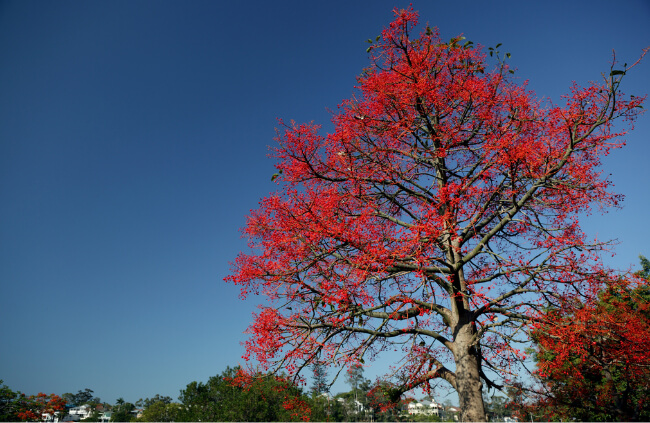
For the purist, the Illawarra Flame Tree is not completely deciduous. While most deciduous trees lose their leaves in winter and then gain them again around flowering time, this Brachychiton opts to shed most of its foliage when the blooms appear.
It then leaves this very striking tree with red bell flowers against a grey bark to look amazing against a blue-sky backdrop. The Illawarra Flame Tree, native to the east-coast of Australia, can grow to 15m (50ft) and grow best in drier, warmer parts of the country.
Australian Red Cedar – Toona ciliata
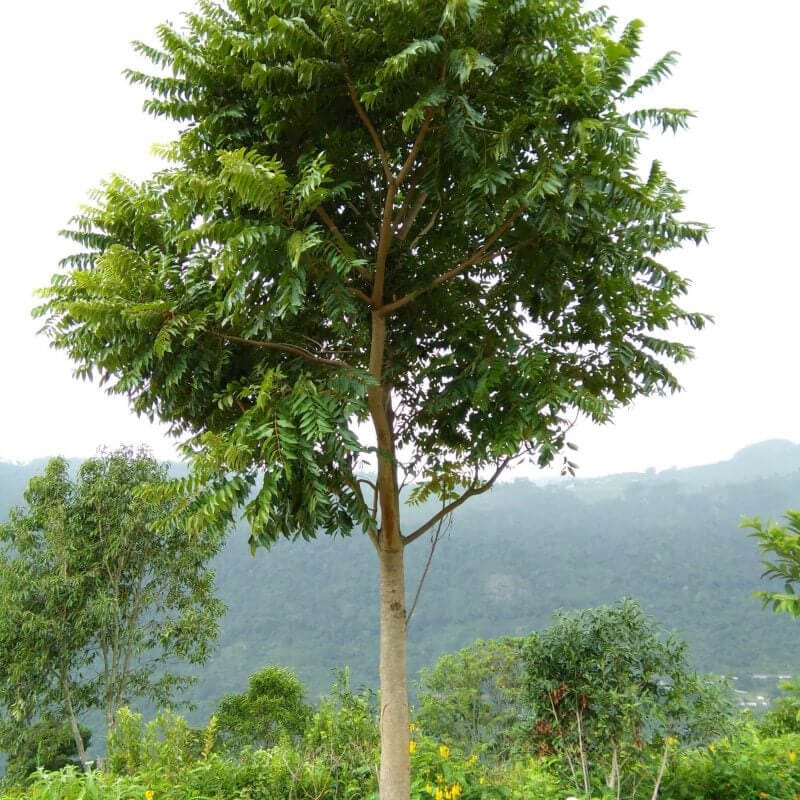
Source: Sequoia Valley Farms
The Australian Red Cedar is more of your classic deciduous tree, shedding its leaves in winter and then flourishing with bronze-red foliage in late spring. It was once harvested as Australia’s premier timber but is now becoming hard to find.
If you can source one, then you will need some room to grow it as the tree can reach up to 35m (120ft) high.
White Cedar – Melia azedarach var. australasica
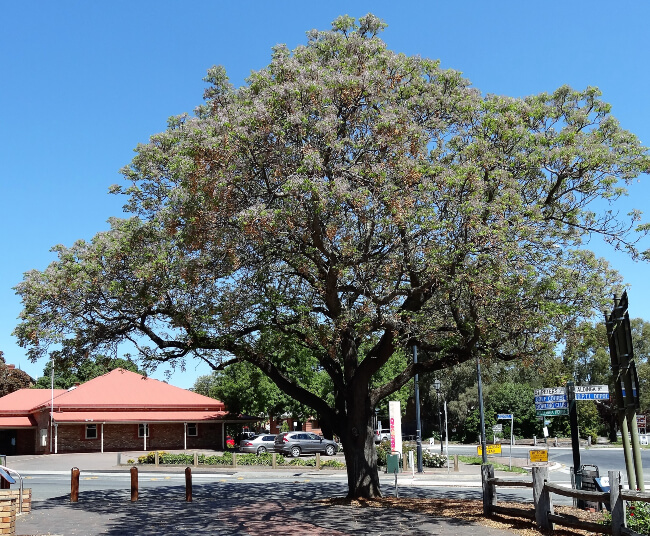
Source: National Trust Trees
Another cedar, this time the white version, Melia azedarach is really a child of the mahogany family. It produces yellow fruits which are poisonous to humans, but birds seem to love them as they remain on the tree long after it has de-foliated.
It’s another tree that originates from the eastern seaboard and can grow to 20m. Its fast-growing habit is a great plus for many home gardeners.
Tanglefoot Beech – Nothofagus gunnii
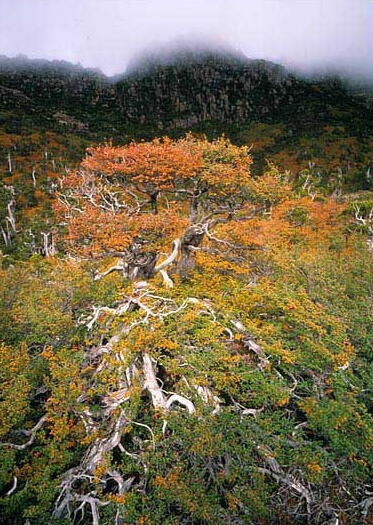
Source: Geoff Murray Wilderness and Landscape Photography


Get Your Free Guide:
Master Growing Australian Natives eBook
A Must Have Complete Guide for Every Australian Garden
Get Your Free Guide:
Master Growing Australian Natives eBook
A Must Have Complete Guide for Every Australian Garden
Our cold-climate deciduous is the tanglefoot beech which is native to the Tasmanian highlands. It’s a low grower compared to the rest of the Aussie deciduous trees but can still reach up to 5 m in height.
It’s very much the traditional style of deciduous trees with its foliage changing shade to hues of yellows, oranges and reds mid-autumn and then shedding them completely at the start of winter.
Boab Tree – Adansonia gibbosa syn. Adansonia gregorii
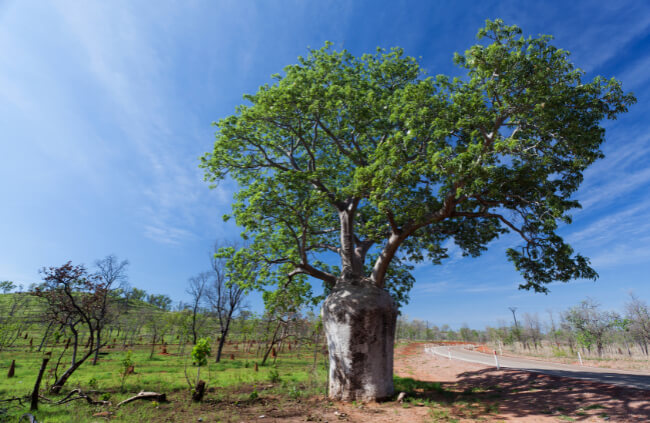
One of my favourite trees is the boab tree which flourishes in our country’s north. They are truly the camels of the plant kingdom as they store water inside their trunks during the dry season and then replenish themselves during the tropical wet.
These boab trees lose their leaves at the same time as the dry period starts in order to conserve energy.
Silky Oak – Grevillea robusta

Another spectacular native deciduous tree is the Grevillea robusta, the largest plant in the Grevillea genus. It too, like the Illawarra Flame Tree, is only semi-deciduous, losing its leaves before showing its blooms.
These trees can grow to 12m high and are common in the north-eastern parts of Australia.
Queensland Bottle Tree – Brachychiton rupestris
I believe the Queensland Bottle Tree is one of our most iconic and unique-looking Australian deciduous trees. It is widely celebrated for its bulbous, almost cartoon-like trunk that can sport a diameter of up to four metres when mature.
A perfect pick to add interest and spectacle to larger landscapes, this tree grows between 10 and 20 metres tall with a spread of up to 12 metres.
Related: How to grow Queensland bottle trees
Koda Tree – Ehretia acuminata

Source: Forestrypedia
Native to Asia and Australia, the Koda tree boasts a lovely thick canopy that is typically adorned with delicately fragranced white blooms and showy bird-attracting fruits. While the tree is mostly evergreen, it can become deciduous during periods of drought.
Growing up to 8 metres tall and wide, this ornamental native is an excellent pick for almost any Australian garden.
Grass Tree – Xanthorrhoea glauca

Source: Australian Seed
A semi-deciduous native specimen, the grass tree unsurprisingly features gorgeous grass-like blue-grey foliage which allows it to easily stand out in gardens. Furthermore, the foliage crows the tree's structurally attractive trunk, offering gardens a quirky yet decorative influence.
The grass tree grows to a height of up to 6 metres with a spread of up to 2.5 metres.
10 Non-Native Deciduous Trees in Australia
Jacaranda Tree – Jacaranda mimosifolia
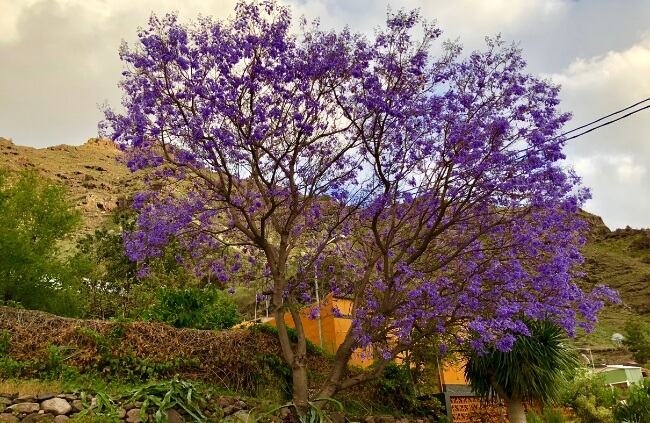
It's easy to see why the Jacaranda tree has received such prolific admiration globally. With its large clusters of long-lasting violet-coloured flowers that sit gracefully on the gently arched branches, its striking and ornamental influence in gardens is hard to surpass.
This sun-loving tree typically grows between 8 and 15 metres tall, sporting a canopy of up to 10 metres wide, perfect for adding charming patches of shade around the garden.
See our in-depth Jacaranda Tree for everything you need to know.
Crepe Myrtle – Lagerstroemia indica
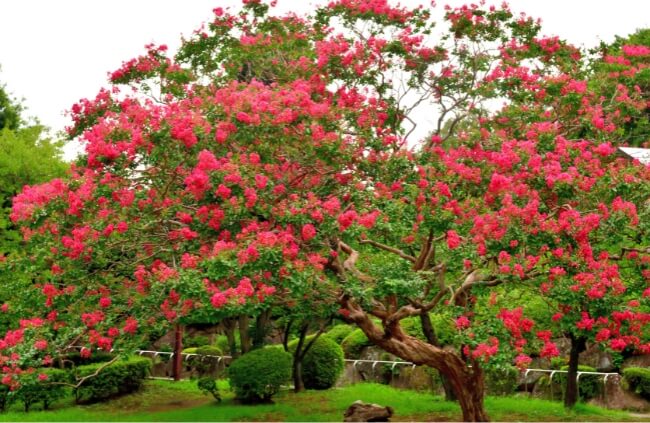
Boasting buoyant bunches of beautifully bright blooms in the summers, the Crepe Myrtle tree is another must-have deciduous addition for sunny gardens. Select varieties offer flowers in white, pink, red, or purple – allowing you to find the perfect aesthetic for your outdoor spaces.
These medium to large trees usually reach up to 6 metres tall and wide in cultivation.
Forest Pansy Redbud – Cercis canadensis ‘Forest Pansy’

Source: Black Bridge Nurseries
Globally noted for its unusually striking and vivid foliage, this award-winning cultivar sports silvery branches in winter, dazzling purplish blooms in spring, and spectacular summer-to-autumn splashes of foliage that shift through shades of red, green and yellow.
A perfect feature specimen for almost any garden, the tree will typically grow to an accommodating height of 3 to 5 metres tall and wide.
Check out our guide to learn how to grow Cercis canadensis in Australia.
Japanese Maple Tree – Acer palmatum

The Japanese Maple stands out thanks to its beautiful autumn leaves that display eye-catching variegated flushes of purple to red, yellow to orange, and even shades of green. Its canopy forms in a lovely globous shape, offering highly ornamental appeal in gardens.
This slow-growing deciduous tree is perfect for outdoor pots or smaller gardens, usually growing between 4 to 8 metres tall and wide.
Plane Tree – Platanus orientalis

A very common tree throughout Europe, the plane tree features an attractive bark with a colour combination of brown, grey, and cream. Its maple-like leaves are large and present themselves in stunning pops of lime-green.
This tree is best suited to larger landscapes as it can reach a mature height and width of up to 30 metres.
Japanese Cherry Tree – Prunus serrulata
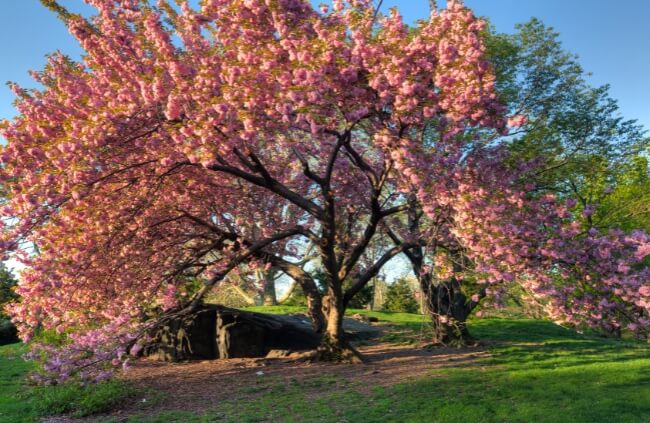
Featuring pendulous branches adorned with perky displays of soft-pink blossoms, this old Japanese weeper is a prolific flowerer, perfect for adding interest to outdoor spaces. New foliage emerges with a bronze colour that matures to green then eventually a golden orange in autumn.
This Japanese native loves the sun and is fast-growing, reaching about 4 metres tall and wide once established.
Related: How to grow weeping cherry trees in Australia
Silver Birch Tree – Betula pendula
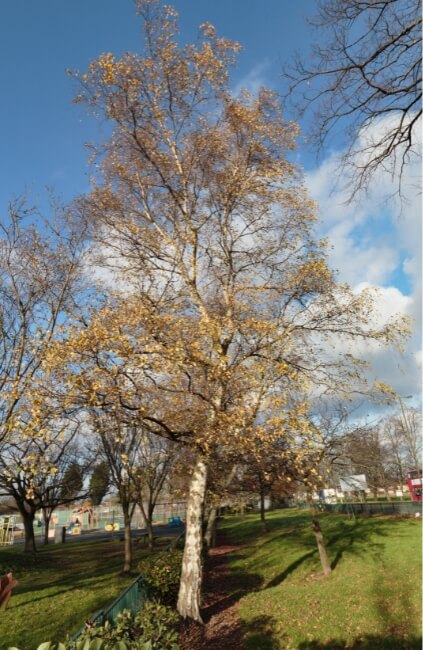
Another popular European and Asian species, this deciduous tree does share some small similarities with other Australian deciduous trees. It features a functional upright pyramidal form, a silvery-white trunk, and lively green foliage that turns yellow in autumn.
It is highly variable and looks great when planted in odd groupings to create an effective forest-like appeal to larger landscapes. Its mature size is about 10 metres tall and 6 metres wide in cultivation.
Chinese Pistache Tree – Pistacia chinensis
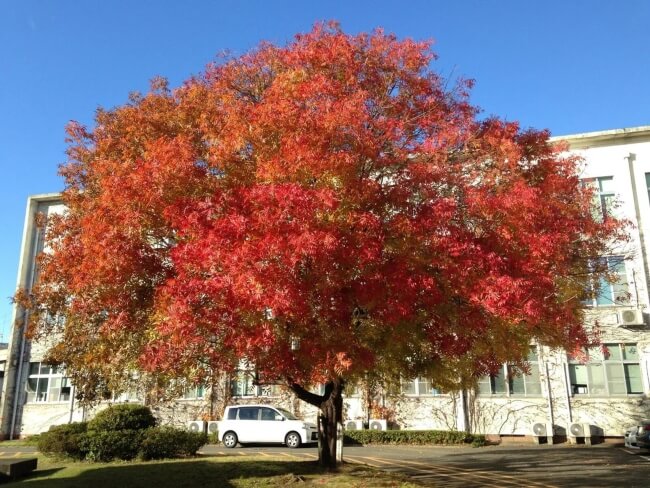
Source: R&B Floridaseeds
A perfect specimen for adding drama and intrigue to gardens, the Chinese Pistache is celebrated for its fiery orange-to-red foliage that engulfs the tree throughout autumn. Its narrow leaflets atop the umbrella-like crown add wonderful textures while the tree's upright form offers many decorative and useful landscaping applications.
The tree is highly resistant to pests and disease and is fast-growing to about 10 metres tall and wide.
Indian Bean Tree – Catalpa bignonioides
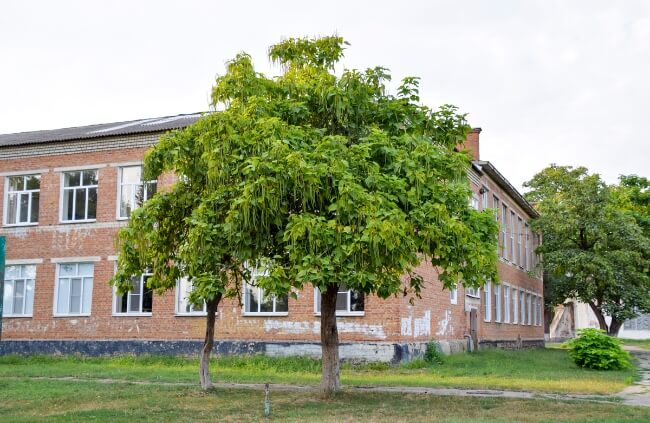
Ironically, this large, broad-domed tree is native to the southeastern parts of the US, famed for its attractive heart-shaped foliage, dense canopy, and bell-shaped blooms that form in shades of white, pink and orange.
While it can be kept smaller in containers or with regular care, the tree will typically reach around 12 metres tall with a spread of up to 6 metres in garden beds.
Lipstick Maple Tree – Acer rubrum ‘October Glory’

Source: Provincial Plants & Landscapes
This gorgeous cultivar produces long-lasting lush green summer leaves that eventually darken to a pinkish-red in autumn, becoming more crimson as winter progresses, hence its common name.
Its leaves are similar to those found on traditional maple trees and its form is graciously upright, making it an excellent feature specimen in gardens that need some texture and colour.
It is important to note that the foliage is toxic to horses. This tree will usually reach up to 12 metres tall and 9 metres wide in cultivation.
Wrapping Up Our Deciduous Trees Guide
Well, there you have it, a comprehensive list of our best native Australian deciduous trees as well as some excellent introduced deciduous tree species. I hope this article has helped you find the perfect picks for your garden, whether native or exotic.
With so many stunning trees to choose from, I have no doubt you will be able to take your outdoor spaces to new heights. There are Australian deciduous trees for any garden setting or size, and though their leaves are fleeting, their dynamic influence within gardens can be everlasting.
Published on October 27, 2023 by Lorri Hopkins
Last Updated on January 23, 2025




